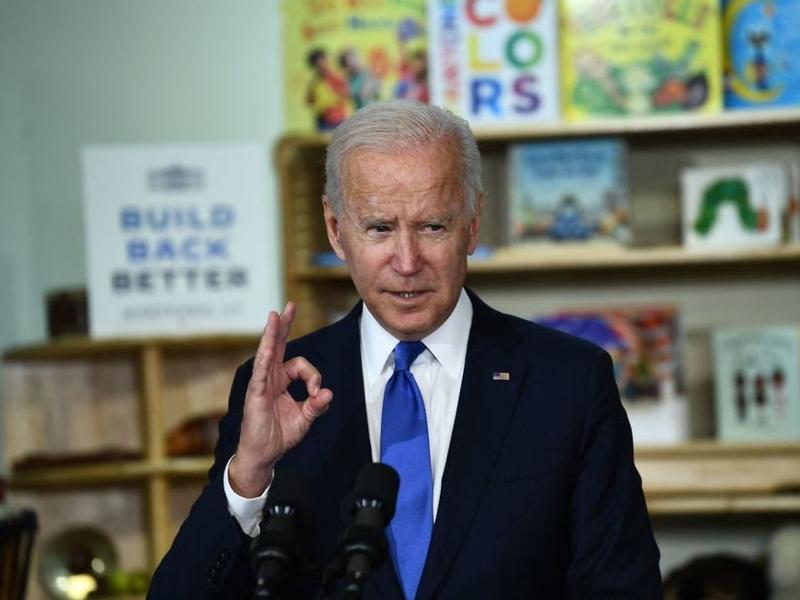Biden's equity agenda hangs in balance in the Congress spending negotiations

On his very first day in office, President Biden signed an executive order meant to begin unraveling the systemic barriers that have magnified economic inequality in the United States.
Now months later, as Congress haggles over the size and scope of Biden's proposals to transform the social safety net, advocates for equity are worried that the final product may leave out too many who need help.
"Every single dollar that's subtracted from that top line number is one less dollar for the investments that are necessary to move towards a more equitable economy. And frankly, we can't afford not to do these types of investments," said Rakeen Mabud, of the Groundwork Collaborative, a progressive economic think tank.
Where the agenda started
Earlier this year, Biden put forward a $3.5 trillion plan that included universal pre-K, paid family leave and free community college.
The plan was meant to build on early administration actions — like a $6 billion program for disadvantaged farmers — and a coronavirus aid package that included temporary financial support for families and unemployed workers.
The centerpiece of that effort was an expanded child tax credit that automatically goes out to families each month through the end of the year.
"The policies as a part of the American Rescue Plan have lifted over 400,000 Black children out of poverty this summer alone," said Heather Boushey, a top economic adviser to Biden.
The $3.5 trillion plan would have made the child tax credit permanent. But now moderate Democrats say that package is too costly and must be significantly scaled back.
Biden has acknowledged that compromise will be necessary.
How the policies are intertwined
What ultimately ends up in the package will likely determine whether the long-term impact will match Biden's rhetoric on equity.
"A lot of these policies work in tandem with each other," said Kate Bahn, director of labor market policy at the Washington Center for Equitable Growth.
For example, paid family leave will help a parent be able to stay home with a newborn, but that parent also needs access to affordable child care and the ability to take off if their child is sick.
"We need a broad suite of policies," Bahn said. "Care is such a complex phenomenon that you really need a myriad of types of supports to manage care."
Who makes the cut to get the benefits
One suggestion that's been floated to lower the costs of Biden's proposals is to use means testing — basically cutting off benefits for people with higher incomes.
There's also been talk of requiring people to have a job to receive the child tax credit.
Progressive groups argue these sorts of conditions are out of step with the vision that Biden has put forth, because it would limit access and make implementation more burdensome.
"Means testing would be a huge mistake," Mabud said. "It would be throwing away a real opportunity to shift, not just policy, but people's real lives. We would also be throwing away an opportunity to shift the way people think about who deserves and who doesn't."
Still, the White House has not ruled out means testing.
White House adviser Boushey said all of these programs are supposed to be aimed at the families who need the most help.
"I think there's a way, if we have the right basket of policies, that we're focused on meeting the needs of families across the spectrum, I think there's a way that we can still make this work," Boushey said.
9(MDEwODYxNTQyMDEzNjAxODk2Nzc2NzNmYQ001))